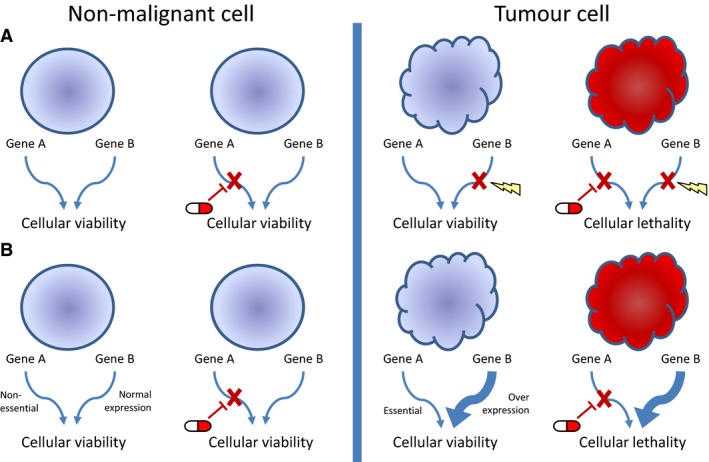Figure 1.

The concept of using synthetic lethality as a therapeutic strategy in cancer. (A) Synthetic lethality: The loss of gene A or gene B in isolation is compatible with cellular viability, whereas loss of both genes together leads to cellular lethality. A normal cell therefore would be able to tolerate inhibition of gene A, whilst for a tumour cell that has already lost the function of gene B, inhibition of gene A is lethal. (B) Synthetic dose lethality: Overexpression or overactivation of gene B leads to cellular dependence on gene A. Whilst normal cells are able to tolerate inhibition of gene A, in tumour cells that overexpress gene B, inhibition of gene A is lethal. Key: regular circle – non‐malignant cell; irregular circle – tumour cell; red cells are those with a complement of mutations incompatible with viability; tablet – drug inhibition; cross – loss of gene function; thickened arrow – gene over‐expression; lightning bolt – gene mutation.
